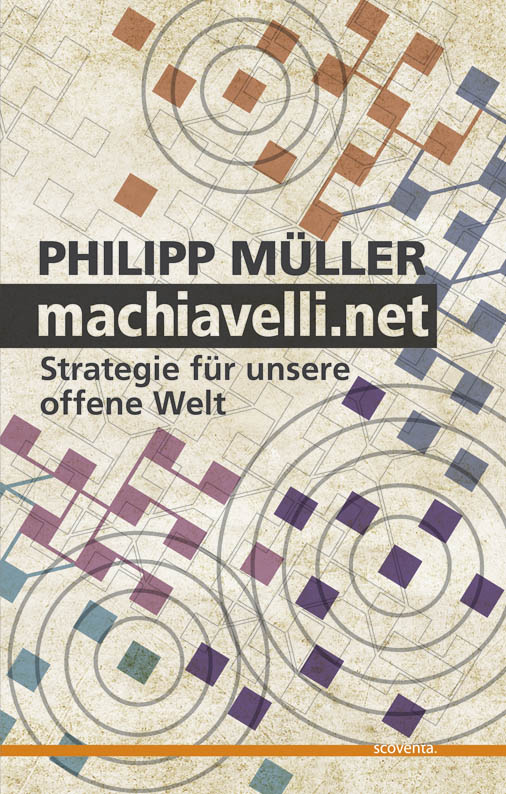The Story of Anti-Leadership: Fostering Collaboration in Turbulent Times
Co-authored by Sofia Elizondo and Philipp Mueller
This year in our leadership course students came up with new questions that we had not heard before: why do you teach us leadership, if value is created through the collaborative efforts of open source communities? And how does your class help us to foster such collaboration?
While meandering through the Alte Pinakotek in Munich, one of the world’s greatest collections of old masters, where societal transformations of the 15th Century are painted onto canvas (stark reminders of the power of ideas on our worlds), Sofia Elizondo from the BCG strategy institute and I mulled over this question.
Here’s our raw thinking that will form the basis of an article on anti-leadership. Do join us in this effort!
Moving from Strategy to Second Order Strategy
The world has seriously changed. Not just the financial crisis, but a systemic profound shift. We can see this broadly across many different “categories” from politics to our lifeworlds. For example, interconnectedness has changed our societal behaviors and expectations; Technology has changed the way organizations relate to each other and generate value.
In the business world, we used to want to be industry leaders because industry leadership granted security in the # 1 spot. NOT ANYMORE! While industry leadership used to last 10 years, it is now common to find industries where the #1 spot is held by a handful of companies during any given year. We also assume that industry leadership is desirable, that market share increases profitability. That relationship has also disappeared and in some industries even inversed. So why do many companies’ mission statements still say: “we want to be the number 1 provider of toothpaste?”
To explain this marketplace turbulence, some academics push the “hypercompetition” theory. We see all of this turbulence in industries because the world is approaching a more perfect marketplace, competition in fiercer so more value is transferred to the consumer.. However, the data show the contrary. The difference between the top performers and bottom performers within industries is actually increasing, not decreasing. So SOMETHING must be driving that change.
Now, if we look at classical strategy – the strategy derived from 19th Century Prussian military thinking, we realize that Clausewitz’ian strategists basically do the following: analyze their market, forecast the future, and optimize the company accordingly through a first order strategy plan.
This might have worked very well for the stable business world of the 60s, but it assumes we can KNOW all of the relevant variables, and that we can FORECAST them. These assumptions unfortunately do not work very well today.
Now, is classical strategic planning irrelevant in all industries? Not really. If we plot all industry groups across a “turbulence chart” measuring rank volatility across the x axis, unpredictability on the y and the difference between bottom and top performers on a 3rd axis, we see that there are particular places where it is much more relevant, and other industries that are hopeless. Unfortunately, it is hopeless in the fields that we care about, such as telecoms, software, internet retail, media (which is not surprising).
So now what?
Let’s replace the Prussian military battle analogy with a metaphor of organizations successfully thriving in unpredictable environments: genetic systems in biology (populations of species, for example) The trick of biological systems is their second order “planning” capability: they adapt flexibly to changing environments without asking their CEO for permission. Naturally, populations randomly generate enough genetic variation to survive environmental changes, such as food shortages, climate changes or new predatory patterns. In that sense, the population is not optimized for lean six-sigma performance, but carries some “genetic slack” that can be very useful for the survival of the species if an Ice Age comes along (or if their food source dies out, a meteor strikes or any other unpredictable event occurs).
Adaptive Strategy’s aim is to set the context for strategies to emerge, NOT to specify The Strategic Plan for the organization. Now as with any metaphor, let us not take the biological approach to an extreme. We can still assume some type of coordinating function, or what we could refer to consciousness or an organization that defines the second order strategies, designs the organization fit to carry these out and intervenes in extreme situations, where adaptation would fail. And this is where anti-leadership comes in.
The Leader of the past
In the past the leader was an authority figure.The term “leader” begs the question: Of what? The immediate answer is: of followers. Notice that it is content agnostic. (Leading towards good or evil is still leading). The leader would focus on the crowds it leads: big, small, fully committed, yet-to-be-convinced, etc. The leader “knows more,” therefore had more authority, therefore, was legitimized.
Anti-leadership / second-order leadership / “designers” begs a different question: not “who and how do I lead?” but “what should be achieved?” which is where the focus should be: the target, aim, direction in front. Not the crowd behind. The anti-leader knows that she does not know, that the emperor has no clothes. In that sense, she relies on the organization’s tentacles to gather, interpret, and act on information.
Implementing Adaptive Strategies through Anti-Leadership
With the advent of constructivist thinking in academia, professors have been slowly moving from taking the role of “the sage on the stage, to the guide by the side.” With adaptive strategizing, CEOs will have to learn this lesson. And it will not be easy to move away from the idea of leading, where essentially all others are blind followers, willing to internalize the messages of the leader.
The core principle of anti-leadership is fairly easy. When you cannot analyze, forecast, and plan anymore, you need to empower your organization to be able to modulate it to turbulent contexts, by allowing for variation (think Google’s 20% rule), define meta-principles of selection through mechanisms such as simulation, scorecards, or actual performance in the market place (think Google’s testing of any interface changes), and amplify what works, through scaling-up mechanisms.
The PILS Framework of Anti-Leadership
This type of modulation can be done by designing your organizations around processes in the following way:
Process: Design a beta-process, deliberately, expose it to the real world before it is finished, so that feedback and selection mechanisms can help it adapt.
Interface: Design as many interfaces to the process as possible, these can be internal or external, they can be to experts or to the unwashed masses. Interface design is a second order strategy guided by the question, who should be allowed to contribute to the process and it is a third order strategy, when you ask who should be allowed to make changes to the process.
Legitimacy: Do not stop in defining interfaces, which can be seen as a technical issue (what APIs to use, what standards, etc.), but imagine communities around them (and again these can be contractually bound to you or not. They might be experts, carriers of local knowledge, or crowds).
Scale: The issue of scaling processes is not trivial. Just as different forces of nature work differently at different scales, think about how gravity does not really affect an an ant – it will survive a fall from a 10 story house, however, wind does. An elephant on the other hand will not be swayed by wind, but could not survive the drop. So the challenge for the anti-leader is to think about processes at different levels of scale and how to get from one to the other.
Skills of the Anti-Leader
Anti-leaders are not loud, they listen. The do not command, but empower. They do not choose, but design decision mechanisms. They do not aim to be smarter than the crowd, or the outsiders, or the locals. But they guide and shape and LEARN. Is this what we teach in leadership class? Is this how you see yourself as a leader? It might be time to rethink our higher education curricula….
 Author of machiavelli.net, proud father of three, interested in shaping network society. Welcome to my blog.
Author of machiavelli.net, proud father of three, interested in shaping network society. Welcome to my blog.
Pingback: Pajamas Media » Stupidity, Duplicity, Hypocrisy, and Backpedaling … | Educational Virginia
It's always good to have (a) PILS in your organization :)
Philipp, overall interesting approach (of course, I never would expect something else from you ;-) Just one thought: Some aspects of the proposed framework sound a bit similar to the discussion we had years ago about “learning organizations”, “agile organizations” or “good leaders empower their people” etc . I suggest to spend some more words on the differences to these approaches and the new aspects of the framework
To hold, you must first open your hand. Let go.
The rigid and stiff will be broken.
The soft and yielding will overcome.
Lao Tzu (c.604 – 531 B.C.)
How to lead? Chinese philosophy from the Warring States Period offers a plethora of advice on how to lead and succeed in times of constant upheaval and change. Will the feminine and yielding secretly overcome or the masculine forceful take the reigns? As you pointed out, it always seems to depend on who you are and where.
I love reading thoughtful articles like yours that propose ideas which are fairly abstract and make the reader ponder. My question is, what is more important: Identifying leadership styles and paradigms or the mere reflection and introspection that you encourage, no matter what outcome. (“Is this how you see yourself as a leader? “)? Is there a truth to be discovered or is the reflection (introspection) the end in itself?
one more thought: you're absolutely right to put the “what should be achived?” question in front. but this should be reflected in the proposed framework as well, let's say as “Horizon” or “Sense” (so maybe it could become a “SPILS” oder “PILSH”-Framework ;-) I believe it is still a crucial competence of “Anti-Leaders” not only to empower processes and enable interfaces on the operational level, to let the organization adopt to ongoing changes. The real question goes even deeper: “Why are we (company/organization) here?” – to stick to your picture: what the heck are the ant or the elephant doing on the roof of a 10 story house? Of course, the cheap answers to that question have to be excluded – stakeholder value, stock price, revenue, margin…
The additional “Horizon” or “Sense” challenge for a Anti-Leader will be to
a) go far beyond that degree of simplicity and banality in defining sense and
b) encourage and enable his or her organization to challenge the sense everyday. Not only in one-time-a-year-funky-leadership-workshops.
rgds
Thomas
Pingback: Shaping Network Society » Blog Archive » Strategy 2.0 is not a 2.0 Strategy